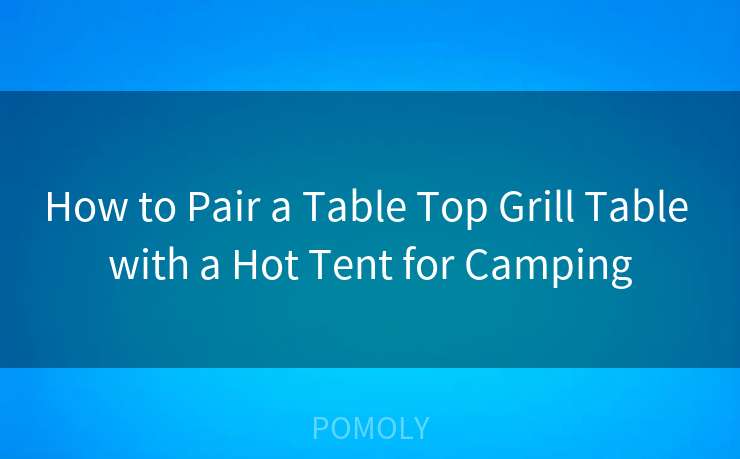Winter Camping Guide: How to Combine Coleman Heater with Hot Tent Safely

Winter Camping Guide: How to Combine Coleman Heater with Hot Tent Safely
Winter camping can be a delightful experience, but it also comes with its own set of challenges. One of the most common concerns is maintaining warmth and comfort, especially when the temperatures drop. A reliable way to enhance your winter camping experience is by combining a Coleman Heater with a Hot Tent. This combination allows you to stay warm, enjoy the comfort of a wood stove, and prepare delicious meals. However, setting this up correctly requires attention to detail and an understanding of safety measures. This guide will walk you through everything you need to know about combining a Coleman Heater with a Hot Tent.

What is a Coleman Heater?
A Coleman Heater is a portable heating device designed for outdoor use. It is named after the Coleman Corporation, which has been a leader in outdoor equipment for decades. Coleman Heaters are known for their reliability, portability, and efficiency. They come in various sizes and power ratings, making them suitable for different types of tents and spaces. Coleman Heaters are typically made of durable materials like stainless steel or titanium, which ensures they can withstand the elements and remain functional for years.
Key Features of a Coleman Heater:
- Portability: Coleman Heaters are designed to be easily carried and set up, making them ideal for camping.
- Safety Features: Many models include features like temperature controls and safety shut-offs to prevent overheating.
- Power Options: Coleman Heaters can provide heat at different levels, depending on the size and power rating.
- Material Durability: Built from high-quality materials, Coleman Heaters are designed to last long and perform well in various weather conditions.
Understanding a Hot Tent
A Hot Tent is a type of camping setup that allows you to use a wood stove inside the tent. It typically includes a tent with a chimney socket, which is where the smoke from the wood stove escapes. The main purpose of a Hot Tent is to keep you warm and comfortable during winter camping. However, it also serves other functions, such as cooking food, enjoying the flames, and exercising your hands-on skills.
Components of a Hot Tent:
- Tent: The main structure where you will sleep and conduct other activities.
- Chimney Socket: A built-in feature in some tents that allows the smoke from the wood stove to escape.
- Wood Stove: The heating source inside the tent, usually placed near the chimney socket.
- Fire-Resistant Glass: Some tents have a glass screen in the chimney socket to allow you to monitor the fire without direct observation.
Safety Considerations:
- Fire Safety: Using a Hot Tent requires careful handling of the wood stove and chimney to prevent accidents.
- Smoke Escapes: Proper installation of the chimney socket ensures that smoke escapes safely and does not积聚 inside the tent.
- vents: Proper venting systems are essential to prevent carbon monoxide buildup and ensure fresh air circulation.
Combining Coleman Heater with Hot Tent
Combining a Coleman Heater with a Hot Tent can enhance your camping experience by providing additional warmth and heat. However, this setup requires careful planning and execution to ensure safety and efficiency.
Safety First
Before setting up your Hot Tent, prioritize safety. Ensure that all electrical systems are properly insulated and grounded to prevent electrical hazards. Also, check that all windows and entry points have proper seal to prevent drafts and moisture buildup.
Setting Up the Tent
-
Choose the Right Tent:
- Select a tent that is suitable for winter use. It should be water-resistant and have good insulation to retain heat.
- Consider the size of your tent based on the number of people and the amount of space you need.
-
Install the Chimney Socket:
- If your tent does not already have a chimney socket, install one. This allows for proper smoke exhaust and safe operation of the wood stove.
- Ensure the chimney socket is securely installed and properly vented.
-
Position the Coleman Heater:
- Place the Coleman Heater inside the tent near the chimney socket. This allows the heat to circulate efficiently and provides a consistent source of warmth.
- Ensure the Coleman Heater is securely fastened to prevent movement, which could disrupt the heat distribution.
-
Set Up the Exhaust System:
- Proper venting is crucial for both safety and efficiency. Ensure that all exhaust vents are open and functioning properly.
- Install a vent pipe or other exhaust system to allow smoke and gases to escape safely.
-
Light the Fire:
- Light the wood stove first to establish a steady source of heat.
- Once the fire is burning, light the Coleman Heater to add additional warmth and heat.
-
Monitor the Fire:
- Regularly check the fire to ensure it is burning properly and adjust as needed.
- Use the fire-resistant glass in the chimney socket to monitor the fire without direct observation.
-
Use Cooking Utensils:
- Use the heat from the Coleman Heater and the wood stove to cook your food. This adds to the comfort of your winter camping experience.
-
Exercise Handles:
- Use the Coleman Heater and the wood stove to exercise your hands. This is a great way to stay active while camping.
-
Prevent Carbon Monoxide Buildup:
- Ensure that all exhaust systems and chimneys are properly vents to prevent carbon monoxide buildup.
- Open all windows and doors to allow fresh air circulation.
-
Store Your Equipment:
🔔🔔🔔 【Sponsored】 🔔🔔🔔
🔔🔔🔔
- After setting up, store your Coleman Heater and wood stove in a cool, dry place to prevent damage from the elements.
Choosing the Right Coleman Heater
When choosing a Coleman Heater, consider the size and power of the heater. The size should match the space of your tent and the number of people you will be camping with. The power rating determines how much heat the heater can generate, so choose one that is appropriate for your needs.
Key Considerations:
- Size and Weight: Smaller Heaters are easier to carry and set up, while larger ones provide more heat.
- Power Rating: Choose a Heater with a power rating that matches your tent's needs.
- Material: Coleman Heaters made of high-quality materials like stainless steel or titanium are durable and efficient.
Sizing the Tent
The size of your tent is an important factor when combining a Coleman Heater with a Hot Tent. A larger tent provides more space and insulation, which can help retain heat during winter. However, it also requires more setup and preparation. Consider the following factors when choosing the size of your tent:
- Number of Campers: Ensure that your tent can accommodate all campers comfortably.
- Weather Conditions: Choose a tent that is durable enough to withstand harsh weather conditions.
- Type of Tent: Some tents are designed specifically for winter use and offer better insulation and protection.
Storing Your Equipment
Proper storage is essential to ensure that your Coleman Heater and Hot Tent components remain in good condition. Store your equipment in a cool, dry place away from direct sunlight. This will prevent damage from pests, moisture, and the elements.
Key Storage Tips:
- Outdoors: If you store your equipment outdoors, ensure that it is kept away from fire and water sources.
- Indoors: If storing indoors, use a shed or garage to keep it out of the weather.
- Tagging: Label your equipment with your name and the date of purchase to prevent theft and ensure easy retrieval.
Conclusion
Combining a Coleman Heater with a Hot Tent can significantly enhance your winter camping experience by providing warmth, heat, and a comfortable environment. By following the steps outlined in this guide, you can ensure a safe and enjoyable experience. Remember to prioritize safety, pay attention to the details, and always maintain a sense of responsibility towards the equipment and environment. With proper preparation and execution, you can make the most of your winter camping adventures.

Scan the QR code to access on your mobile device.
Copyright notice: This article is published by AotSend. Reproduction requires attribution.
Article Link:https://blog.pomoly.com/post139.html






